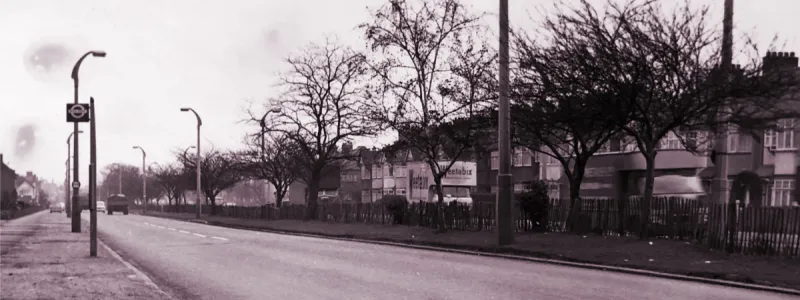
Ways in and out of London from the Midlands, the North and East Anglia. The Northern Radials of the Ringway plan would have smoothed stressful journeys to the capital and bridged gaps in the city's road network.
The Ringways were, obviously, ring roads - but the Greater London Council's Primary Road Network, the plan to which the Ringways belonged, called for a system of "rings and radials". The rings were the Ringways, of course, but the radials would be the routes in and out. The north side of London, being the side of the capital that faces the rest of the country, would bristle with new radial motorways.
The following pages describe seven radial routes around the north and east of the capital, though not all of them were in the GLC's Primary Road Network. The nature of the Ringways themselves - reaching far outside the GLC's boundaries - mean that some radial routes linking them never entered Greater London itself. Other road proposals were abandoned or scaled back before the PRN was finalised.
The Northern Radials are examined in turn from west to east, beginning with the M1, London's main road north, and reaching all the way round to the A13. Among them are routes like the A10, virtually complete as their planners envisaged them, though even the roads that were largely finished are not without interesting back stories or (in the case of the A10) bigger plans that were considered too ambitious even for the motorway mania of the sixties.
Others, like the M11, take an obviously unfinished motorway and explore its intended continuation towards London.
There's also a third category of road in this group: the completely abandoned. The presence of the M13 hints at a more enthusiastic scheme for the Thames estuary than was ever built, but even stranger and more ethereal than that is the road we know only as the Possible North London Radial, or PNLR for short. A fragment of it turns up in planning documents for the Ringway 1 North Cross Route, but for most of its length the only firm evidence is a pencil sketch on a single planning document.
The PNLR's failure to make headway through the planning process might be because of something that affects all the radial routes, which is that they failed to help the road plan meet its aims.
The GLC envisioned a London where people could live without traffic congestion blighting their homes and their lives, and planned a motorway network in the hope of using it to keep traffic off the streets. Key to the plan was the idea that the Ringways would let traffic move around London but not enable it to go in, and commuting to and from the centre would remain primarily the job of public transport.
All of that was quite coherent until the concept of radial motorways are introduced, at which point the Ministry of Transport and GLC were clearly proposing to make it easier and faster to drive in to Central London - the very thing they apparently wanted to discourage. That discord between what they hoped to achieve and what they planned to build was one of the key arguments used against the GLC at the Greater London Development Plan inquiry.
The PNLR almost certainly fell at the first hurdle because there was little appetite to open up whole new corridors of radial movement. But even discounting the PNLR, here alongside it are six further examples of the GLC and the Ministry's proposals to build new roads in and out of London on the most epic of scales. And every single one of them is remarkable.
Sources
- GLC plan specifically required rings and radials; aim to allow movement around London but discourage travel in to centre: HLG 159/1024.
Picture credits
- Plan of Woodford Interchange extracted from GLC/TD/PM/CDO/07.
- Photograph of Eastern Avenue in 1964 extracted from HLG 136/195.
- Photograph of M1 at Edgwarebury Lane is taken from an original by Martin Addison and used under this Creative Commons licence.


